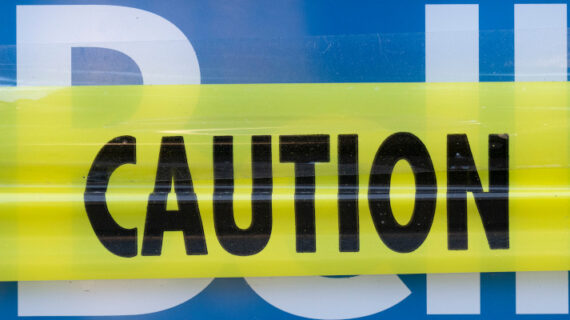The discovery last month of the remains of 215 Indigenous children buried haphazardly outside the former Kamloops Indian Residential School captured Canada’s attention and once again forced the country to grapple with its long history of residential schools.
And it is a long history. The first boarding schools for Indigenous students were set up in the early 1600s by Catholic missionaries, with limited enrollment. It wasn’t until the mid-1800s before the schools started to proliferate.
Confederation kicked off a new period of growth, with three large new schools built in 1883, and expansion westward bringing new schools along with it.
In general, the schools were miserable places. The buildings were poorly built and maintained, with limited heating in the winter and poor ventilation in the summer. The food was terrible and the staff often completely untrained. One principal at a major residential school asked the ministry for guidance on what his job entailed, only to be told there was no such description.
This lack of supervision and training “created a situation where students were prey to sexual and physical abusers,” according to the final report of the Truth and Reconciliation Commission, delivered in 2015. The dates and details in this timeline are mostly drawn from the commission’s 500-page report.
Although the conversation about residential schools sometimes makes the policy sound like ancient history, the last Canadian residential school closed in 1998. Tens of thousands of survivors are still alive and were able to hear the official apology from the Government of Canada, delivered in 2008 by former Prime Minister Stephen Harper.
“We now recognize that, in separating children from their families, we undermined the ability of many to adequately parent their own children and sowed the seeds for generations to follow, and we apologize for having done this,” said Harper.
This timeline of some of the major events in Canada’s history of residential schools shows the legacy reaching deep into the past and staying with us longer than many realize.
Early 1600s
The first boarding school specfically for Indigenous people was created by Catholic missionaries near the future site of Québec City. By all accounts, the school was a failure, with few children enrolled and with many who did attend fleeing at the first opportunity. Over the next 200 years, other boarding schools were created with similarly poor results.
1834
The Mohawk Institute, on the Grand River, near what is now Brantford, Ontario opened in 1834. This school would remain open until 1970.
1847
Egerton Ryerson, the superintendent of schools for Upper Canada, urged the establishment of residential schools where students would be taught “the English language, arithmetic, elementary geometry” and other topics. The report led to several new Methodist-run schools in southern Ontario in the 1850s, including the Mount Elgin school, which did not close until 1946.
1867
On the day of confederation, Canadian churches operated only a handful of boarding schools with most of them receiving small, per-student grants from the federal government. As settlement moved west, missionaries and schools followed.
1876
The federal Indian Act was adopted in 1876, defining who was an “Indian” and establishing a process for how status could be lost. The mechanisms could be arbritrary, for example, men could lose status by graduating from a university and women could lose it by marrying a man who did not have status.
1883
The federal government announced plans to establish three large residential schools in western Canada. Speaking in the House of Commons, and in his capacity as superintendent-general of Indian Affairs, Sir John A. Macdonald said the plan is that children “should be withdrawn as much as possible from the parental influence, and the only way to do that would be to put them in central training industrial schools where they will acquire the habits and modes of thought of white men.”
1884
One year later, an annual report from Indian Affairs showed only 27 students at the three schools.
1894
The federal government put in place regulations on attendance at the schools, which would remain voluntary.
1920s
The distinction between the government-run “industrial schools” that aimed to teach job skills and the church-run boarding schools had eroded almost entirely by the 1920s. By the end of the decade, the government almost excusively referred to them as “residential schools.” Speaking in 1920, deputy minister of Indian Affairs Duncan Campbell Scott told a parliamentary committee that “our object is to continue until there is not a single Indian in Canada that has not been absorbed into the body politic.”
1930
An annual report from Indian Affairs counts 80 residential schools in Canada. The first residential school in the Maritimes opened in 1930, with most of the other schools operating in western or northern Canada. A few schools remained in southern Ontario, but the majority of schools in the province were located in northern or northwestern Ontario.
1951
The Indian Act was amended to allow agreements with the provinces and school boards to educate First Nations children in public schools.
1960
Government figures show the number of First Nations students attending “non-Indian” schools (9,479) had surpassed the number living in residential schools (9,471) by 1960. The government estimated that 50 percent of the children in residential schools were there for child-welfare reasons. A spike in the apprehension of First Nations children, referred to as the “Sixties Scoop,” was “in some measure simply a transferring of children from one form of institution, the residential school, to another, the child-welfare agency. The schools were not funded or staffed to function as child-welfare institutions,” reads the Truth and Reconciliation Commission’s report.
1968
The federal government divided the schools into residences and day schools, in a massive restructuring of the system.
1969
The government’s partnership with the churches ends, sparking school closures that would lead to the shuttering of most schools by the 1980s.
1977
The closure of residential schools throughout the 1970s was accompanied by a dramatic increase in the number of children being taken into the child-welfare system. In 1977, First Nations children accounted for 44 percent of the children in care in Alberta and 51 percent in Saskatchewan.
1995
Between 1995 and 1998, the final seven residential schools were closed.
1998
St. Michael’s Indian Residential Schools, the final band-run school, is closed.
2003
An agreement is struck between the federal government and leaders of the Anglican Church to compensate victims who suffered sexual and physical abuse at Anglican-run schools. The government agreed to pay 70 percent of the total compensation, which would max out at $25 million.
2005
The federal government announces a $2 billion compensation deal for First Nations people who attended residential schools. The package included an initial payout of $10,000, with subsequent payments of $3,000 per year, to the approximately 86,000 eligible people.
2008
Prime Minister Stephen Harper apologizes on behalf of the Government of Canada to former students of residential schools. “Today, we recognize that this policy of assimilation was wrong, has caused great harm, and has no place in our country,” said Harper.
2009
Pope Benedict XVI expresses sorrow to the Assembly of First Nations for the abuse suffered at Catholic residential schools, although he stops short of an official apology.
2015
Canada’s Truth and Reconciliation Commission releases a final report, describing the school system as “cultural genocide,” with 95 calls to action and a demand for an apology from the Pope.




